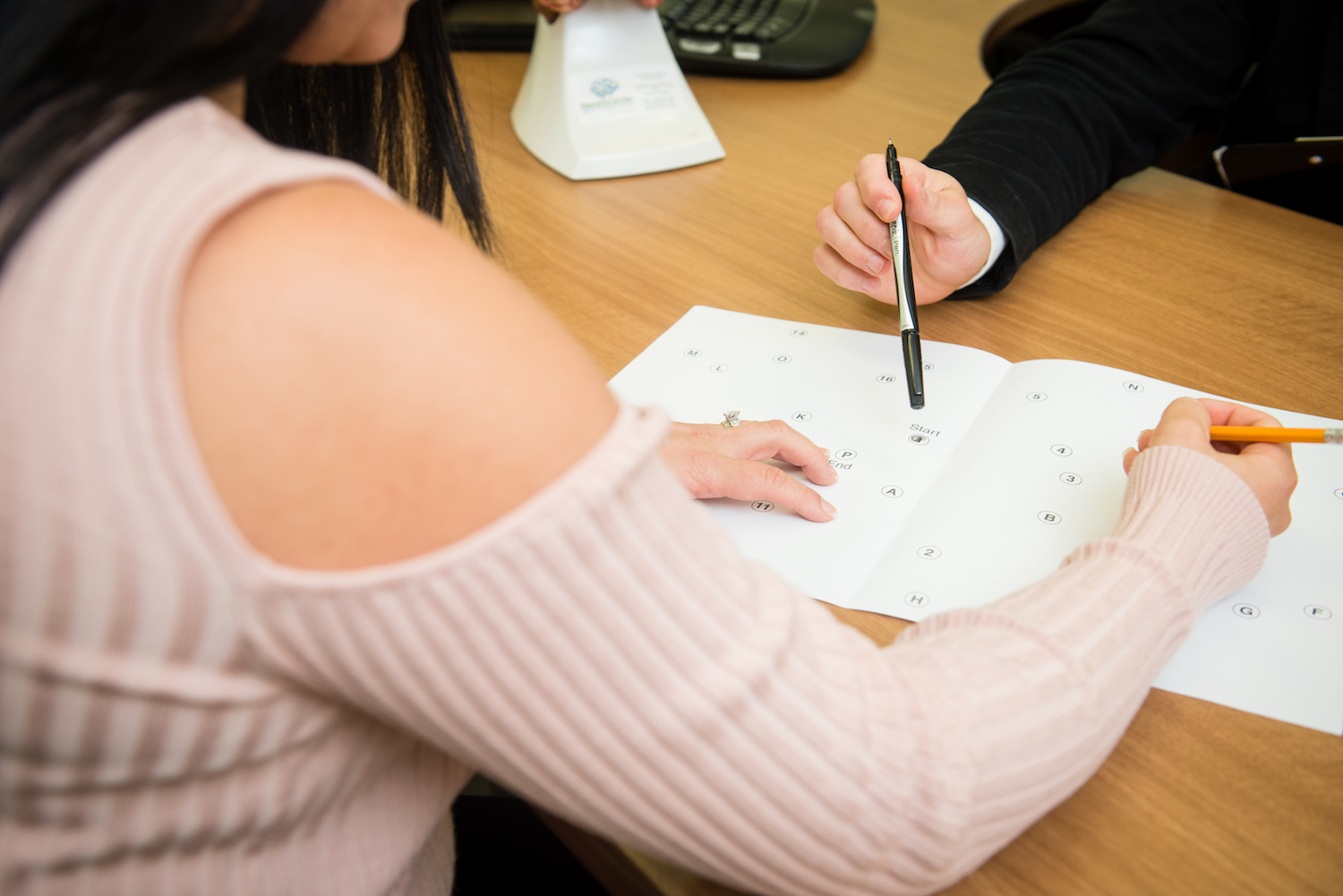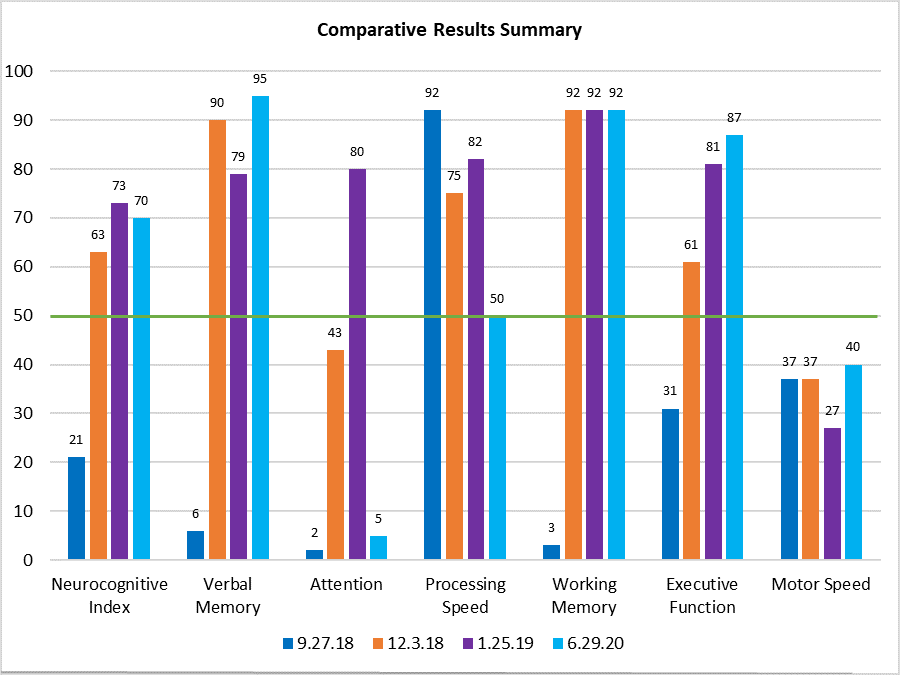With our comprehensive battery of neurocognitive testing, we can measure your memory, attention, processing speed, and executive function. We then compare it with results from other people your age. You will be able to see what parts of your brain are stronger than others and which parts can use some training.
Cognitive testing is completed three times during the program for baseline, midline, and final assessments. Our testing protocol utilizes scientifically validated, objective, and reliable computerized neuropsychological tests to evaluate your cognitive status with regard to a various mental processes like simple motor performance, attention, memory, and executive function. Questionnaires are given to complete the holistic assessment of your overall mental health, lifestyle choices, and sleeping habits.

Brain Fitness Calculator
People’s day-to-day lifestyle choices and activities have a profound impact on their brain health and function, both in the short term and long term. The Brain Fitness Calculator is a series of questions about modifiable factors in a person’s life that can give us hints on how well they are taking care of their brains. The score from this assessment can provide incentives for people to become proactive toward building a stronger brain and appreciate how simple tweaks in their daily activities can reshape their brain for decades to come.
Pittsburgh Insomnia Rating Scale:
Beck Anxiety Scale:
Epworth Sleepiness Scale:
Beck Depression Scale:
This a non-invasive clinical procedure to efficiently and objectively assess a broad spectrum of brain function performance or domains under challenge (cognition stress test) and 50+ computerized clinical and quality rating instruments. The specific sections of the test are as follows:
Verbal Memory Test:
Visual Memory Test:
Finger Tapping Test:
Symbol Digit Coding:
Four Part Continuous Performance Test:
Stroop Test:
Continuous Performance Test:
Shifting Attention Test:
